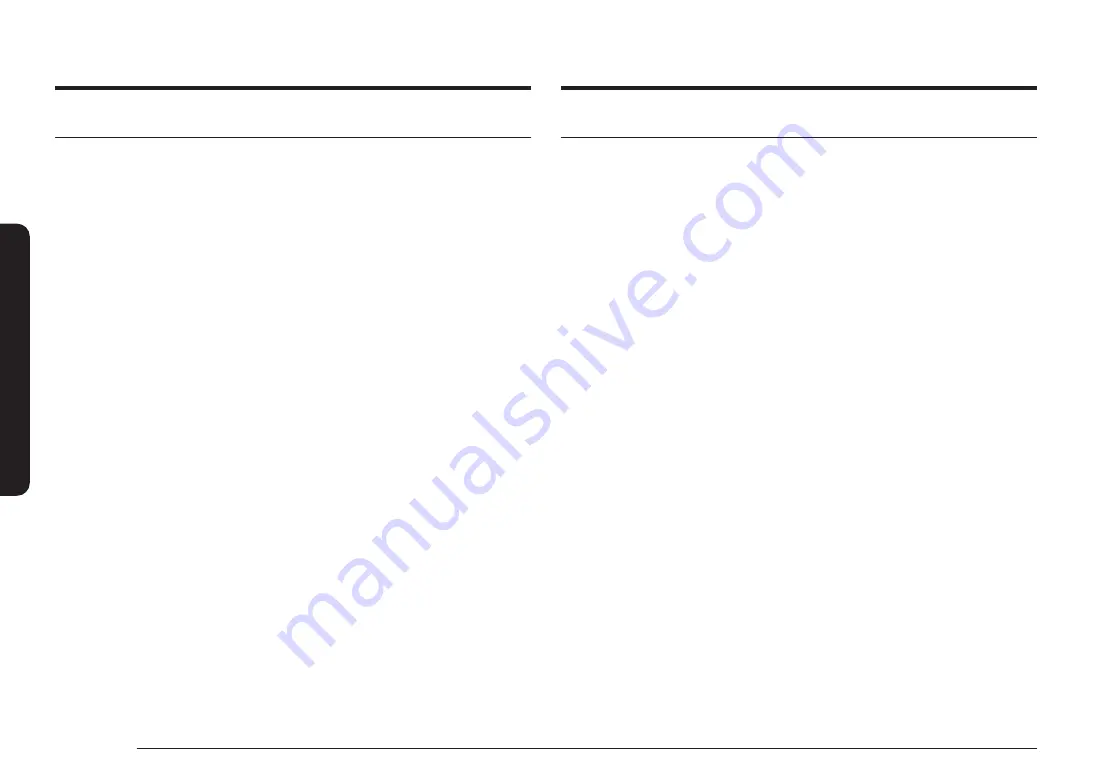
28 English
Sur
fac
e c
ooking
Surface cooking
Protecting the cooktop
Cleaning
•
Clean the cooktop before using it for the first time.
•
Clean your cooktop daily or after each use. This will keep your cooktop looking
good and can prevent damage.
•
If a spillover occurs while you are cooking, immediately clean the spill from
the cooking area while it is hot to prevent a tough cleaning chore later.
Using extreme care, wipe the spill with a clean, dry towel.
•
Do not
allow spills to remain on the cooking area or the cooktop trim for a long
period of time.
•
Do not
use abrasive cleansing powders or scouring pads, which will scratch the
cooktop.
•
Do not
use chlorine bleach, ammonia, or other cleansers not specifically
recommended for use on a glass-ceramic surface.
Preventing marks and scratches
•
Do not
use glass cookware. It may scratch the cooktop.
•
Do not
place a trivet or wok ring between the cooktop and the pan.
These items can mark or scratch the cooktop.
•
Make sure the cooktop and the pan bottom are clean.
•
Do not
slide metal pans across the cooktop.
Preventing stains
•
Do not
use a soiled dish cloth or sponge to clean the cooktop surface. A film will
remain, which may cause stains on the cooking surface after the area is heated.
•
Continuously cooking on a soiled surface can result in a permanent stain.
Preventing other damage
•
Do not
allow plastic, sugar, or foods with high sugar content to melt onto the
hot cooktop. Should this happen, clean immediately.
•
Do not
let a pan boil dry as this will damage the cooktop and the pan.
•
Do not
use the cooktop as a work surface or cutting board.
•
Do not
cook food directly on the cooktop. Always use the proper cookware.
Choosing the proper cookware
What your cookware is made of determines how evenly and quickly heat is
transferred from the surface element to the pan bottom.
•
ALUMINUM
- Excellent heat conductor. Some types of food will cause the
aluminum to darken. (Anodized aluminum cookware resists staining & pitting).
If aluminum pans are slid across the ceramic cooktop, they may leave metal
marks that resemble scratches. Remove these marks as soon as the cooktop
cools down.
•
COPPER
- Excellent heat conductor but discolors easily. May leave metal marks
on ceramic glass(to remove, see above).
•
STAINLESS STEEL
- Slow heat conductor with uneven cooking results. Is durable,
easy to clean, and resists staining.
•
CAST IRON
- A poor conductor; retains heat very well. Cooks evenly once
cooking temperature is reached. Not recommended for use on ceramic cooktops.
•
ENAMELWARE
- Heating characteristics will vary depending on the base
material. Porcelain enamel coating must be smooth to avoid scratching ceramic
cooktops.
•
GLASS
- Slow heat conductor. Not recommended for ceramic cooktop surfaces
because it may scratch the surface.
Summary of Contents for NSE6D 83 Series
Page 1: ...Electric Range User manual NSE6D 83...
Page 65: ...Memo...
















































